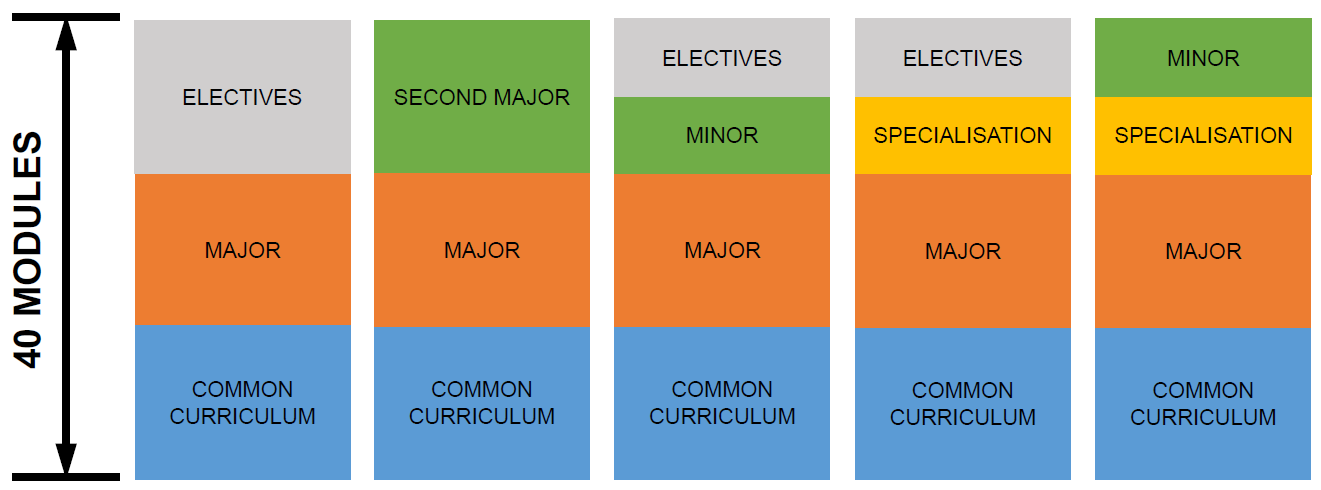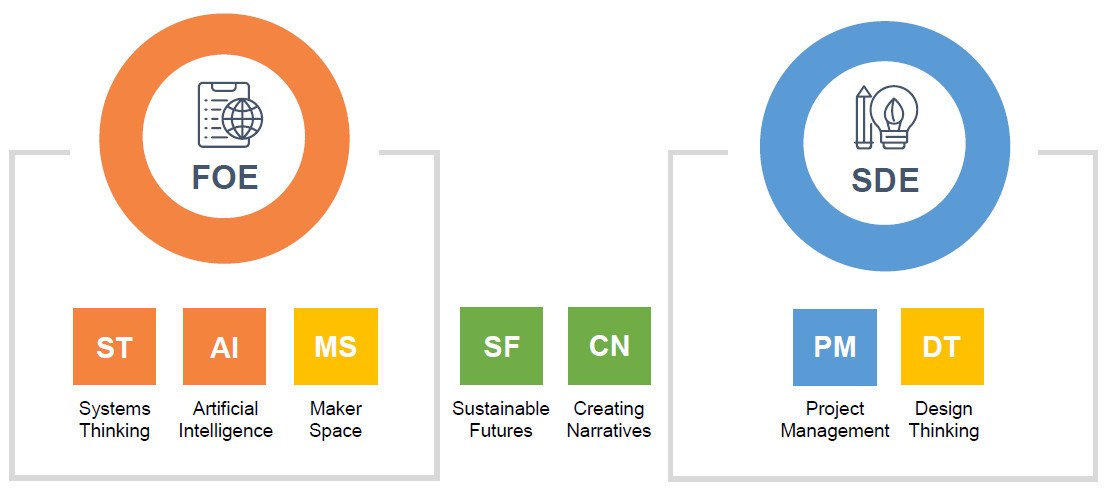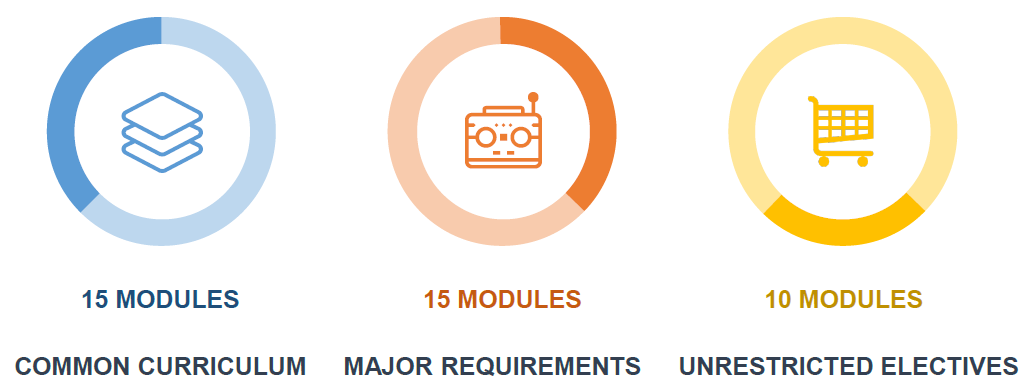
Starting in August 2021, students joining NUS Engineering will be able to enjoy greatly expanded learning pathways with the launch of a new undergraduate curriculum, which includes a Common Curriculum jointly developed with the School of Design and Environment and a more flexible, student-centric structure for students to design their own degrees.
For students applying to programmes in NUS Engineering starting in August 2021 these changes will mean greater choice, breadth and flexibility in charting their university journeys, enabling them to seamlessly take courses from both schools, developing competencies across different fields.
The Common Curriculum for the Faculty of Engineering (FOE) and the School of Design & Environment (SDE) integrates knowledge and skillsets relevant to the professional training offered by both schools.
For instance, an Engineering student starting in August 2021 may now choose to major in Civil Engineering while pursuing two minors in Project Management and Architectural Studies, and complete a Bachelor's degree in four years.
The Common Curriculum across the two schools is being launched alongside a refreshed General Education curriculum at NUS - a university-wide initiative, designed to give all students a more holistic learning experience and the opportunity to contribute to community projects. (For more information on the General Education curriculum, click here)
Learning pathways
Professor Aaron Thean, Dean of NUS Faculty of Engineering, said: "This is a great opportunity for us to reimagine engineering education to nurture engineers who can go 'broad' and 'deep'. We are increasing the learning pathways for students and also injecting non-traditional engineering courses for our students to develop new skills that are required to solve complex real-world problems."
Students who prefer the traditional engineering professional tracks will continue to have the option of developing deep expertise in their chosen fields. But at the same time, the new Curriculum opens the way to emergent subject combinations that have not been possible to date, such as Electrical Engineering and Industrial Design.

Associate Professor Martin Buist, Vice Dean of Undergraduate Programmes at NUS Engineering said: "The new Common Curriculum for FOE and SDE has been designed, in conjunction with industry leaders, to be a new and flexible approach to learning, ensuring our graduates remain adaptable and relevant in an ever-changing employment market. Building on the synergies between Engineering and SDE, the new curriculum allows students to effectively build their own degree, preserving the traditional specialist options whilst also opening virtually unlimited pathways for students to experience a cross-disciplinary education."
Professor Ho Teck Hua, NUS Senior Deputy President and Provost said the Common Curriculum opens up "many exciting possibilities" for students.
"The FOE and SDE have a lot in common. In our everyday life for instance, we are witnessing a convergence of engineering and design - sleek smart phones and consumer electronics, electric vehicles, as well as current net-zero and emerging net-positive energy buildings, just to name a few.
"Therefore, our training for engineers, designers and built environment professionals must evolve. FOE and SDE collaboratively created a distinctive Common Curriculum that takes students out of their silos to embrace the intersection of different disciplines. An architecture student, for example, will learn about artificial intelligence which will add value to his/her professional training," he added.
New interdisciplinary modules

The Common Curriculum will comprise the equivalent of 15 modules, including one module from each of the new Common Pillars, specially designed for and offered to FOE and SDE students.
The new pillars will give FOE and SDE students knowledge and skills that apply across the domains of both schools.
For example, the "Sustainable Futures" pillar raises students' awareness of issues in the area of sustainability, highlighting the impacts of technology on the environment and society. Students will also be exposed to related liveability issues such as diversity, accessibility, vibrancy, and resilience.
Another new interdisciplinary pillar called "Creating Narratives" aims to help students communicate competently and confidently, including in modern forms of communication such as infographics and multimedia.
Flexible, student-centric curriculum structure
The Common Curriculum is part of a revamped undergraduate curriculum structure for FOE and SDE students, giving them more flexibility to design their own degree programmes based on their passions and aptitude.

Students from FOE and SDE will read a total of 40 modules:
- An equivalent of 15 modules in the Common Curriculum, comprising:
- Six NUS General Education modules
- Seven modules imparting interdisciplinary skills common to engineering and design
- An Integrated Project equivalent to two modules
- 15 modules in their selected major
- 10 modules as Unrestricted Electives
The Unrestricted Electives make up a quarter of the overall curriculum and can be used by students to deepen their selected specialisation, or to pursue a second major, minor or courses of their interest across NUS.
The new curriculum structure will apply to students enrolling to FOE and SDE (except for Real Estate) from August 2021 onwards.
Students will still typically complete the 40 modules required for a Bachelor's degree in four years. They are recommended to complete most of the Common Curriculum in 1.5 years.
"Currently, doing a second major or a minor stretching across disciplines is only undertaken by a small group of academically ambitious engineering students," said Professor Thean, Dean of NUS Engineering.
"With the new curriculum structure, we are making such 'hybrid' training accessible to more students. We will also be enhancing academic and career counselling for students so that they can get appropriate guidance when charting their own paths."





